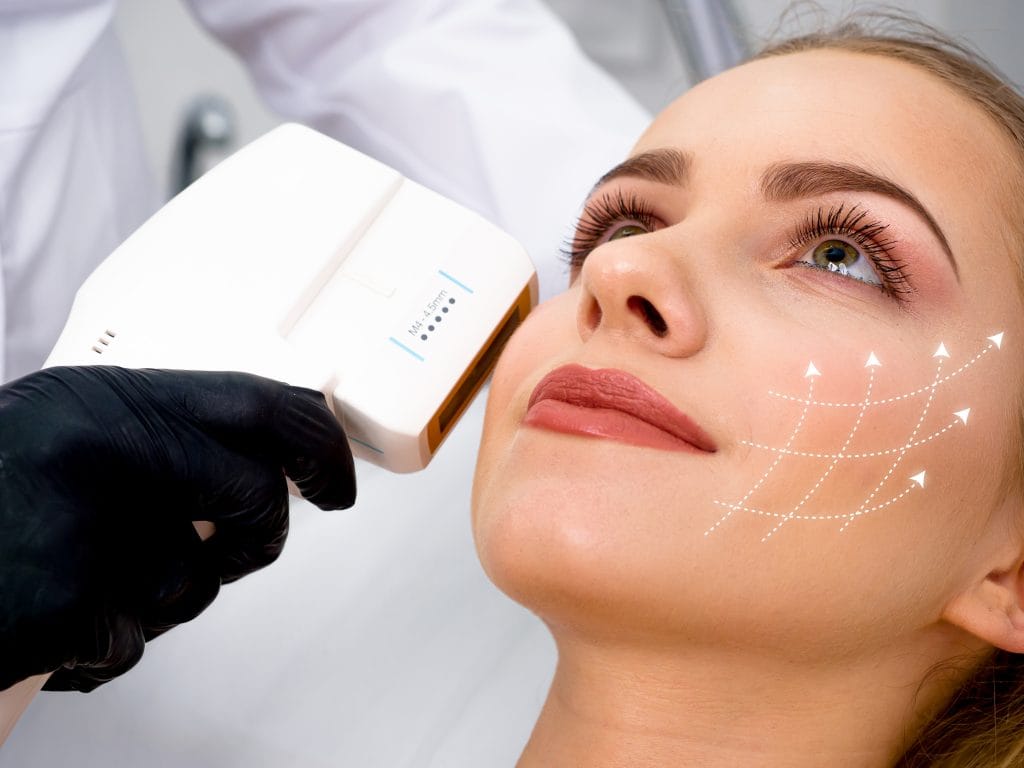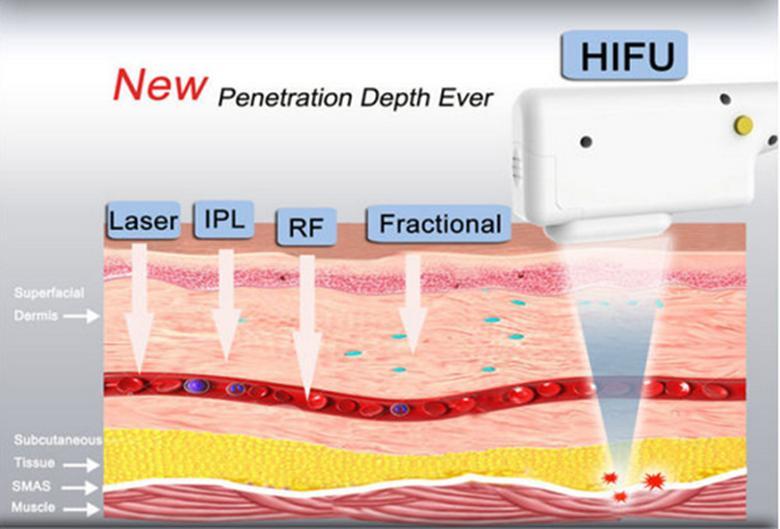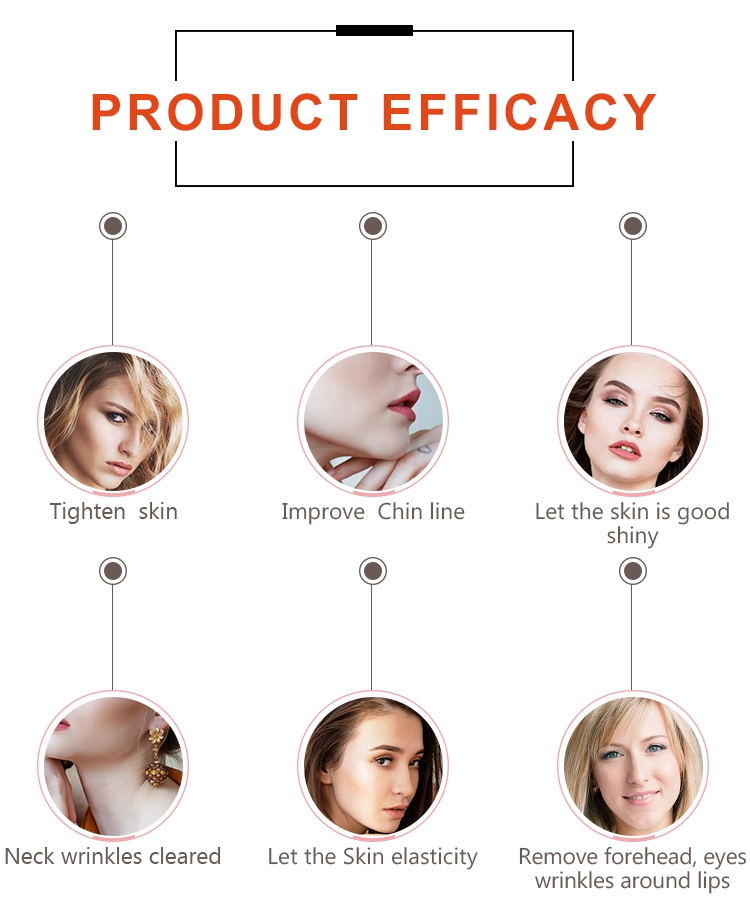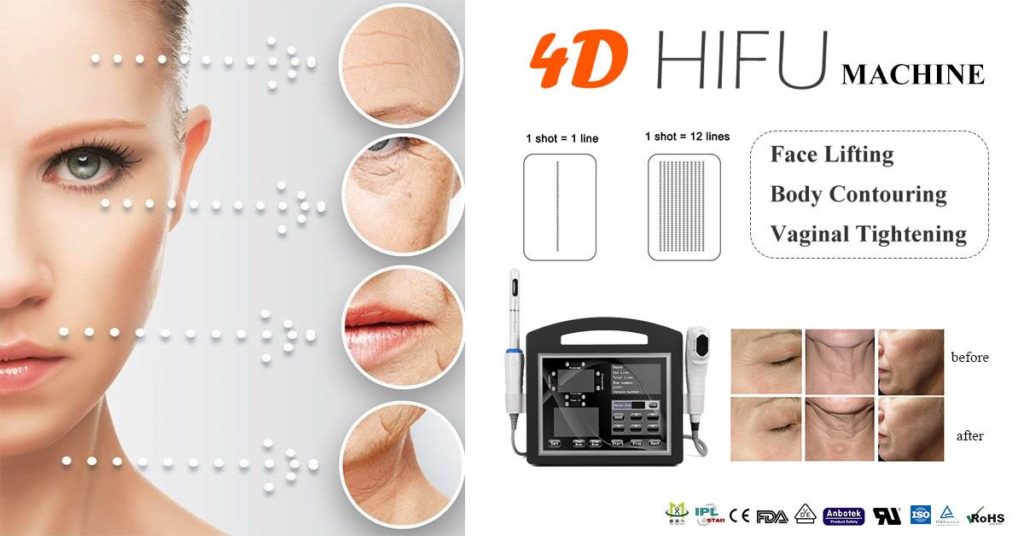09月04 What Is High-Intensity Focused Ultrasound HIFU?

HIFU uses focused ultrasound energy to target the layers of skin just below the surface. The ultrasound energy causes the tissue to heat up rapidly. Once the cells in the targeted area reach a certain temperature, they experience cellular damage. While this may seem counterintuitive, the damage actually stimulates the cells to produce more collagen — a protein that provides structure to the skin. The increase in collagen results in tighter, firmer skin with fewer wrinkles. Since the high-frequency ultrasound beams are focused on a specific tissue site below the skin’s surface, there’s no damage to the upper layers of the skin and adjacent tissue.HIFU may not be appropriate for everyone. In general, the procedure works best on people older than 30 with mild-to-moderate skin laxity. People with photodamaged skin or a high degree of loose skin may need several treatments before seeing results. HIFU isn’t recommended for people with infections and open skin lesions at the target area, severe or cystic acne, and metallic implants in the treatment area.
2. Can HIFU Replace a Face Lift Procedure?
High-intensity focused ultrasound (HIFU) is a relatively new cosmetic treatment for skin tightening that some consider a noninvasive and painless replacement for facelifts. It uses ultrasound energy to encourage the production of collagen, which results in firmer skin.HIFU is most widely known for its use in treating tumours. The first reported use of HIFU for aesthetic use was in 2008.
Several clinical trials have found HIFU to be safe and effective for facial lifting and refining wrinkles. People were able to see results in a few months after treatment, without the risks associated with invasive surgery.
The procedure is also used for overall facial rejuvenation, lifting, tightening, and body contouring. So far, HIFU has been found to be a promising treatment that could replace facelifts.

3. How is HIFU Different to Laser Procedures?
HIFU uses sound energy, tried and true ultrasound, which has unique properties that allow it to bypass the surface of the skin to treat depths not matched by any other non-invasive cosmetic device. HIFU stimulates collagen production in the skin’s foundation, resulting in a clinically significant lift of tissue over the following 2-3 months. Lasers rely on light energy, which cannot reach deeper skin layers at an optimal temperature, so laser treatments typically only treat superficial skin. Since the two technologies often treat different types of skin issues, they’re actually very compatible.
4. How Does HIFU Stimulate Collagen Production?
During the treatment, the transducer delivers and deposits focused ultrasound energy deep beneath the skin at the optimal temperature for collagen regeneration. The treatment jumpstarts a natural process, known to produce fresh, new collagen. The treatment itself doesn’t involve any creams, fillers or toxins, it just relies on your body’s own collagen-building process for natural, noticeable results.

5. How long will a HIFU Treatment take?
The length of the treatment will depend on the area being treated and your individual treatment plan. A face and neck procedure typically takes 90 minutes, while a chest treatment on its own takes approximately 30 minutes.
6. Will I Need to Take Time off Work?
With a single HIFU therapy treatment, there is no downtime. After your procedure, you can resume your normal activities immediately, without having to follow any special post-treatment measures. We have even had clients come to the clinic on their lunch break to have the treatment, no creams required and your general skincare plan and make-up can be applied as normal.
7. What Does HIFU Feel Like?
As the ultrasound energy is delivered, you will feel tiny amounts of energy being deposited to precise depths, indicating that the collagen-building process has been initiated. Comfort levels vary from person to person, but the sensation only lasts while the ultrasound energy is being delivered.
8. How Many HIFU Treatments Will I Need?
Most clients only need one treatment. However this may be based on the degree of skin laxity, the biological response to ultrasound energy and the individual’s collagen-building process, some clients may benefit from additional treatments. Because skin continues to age, future touch-up treatments can help clients keep pace with the body’s natural ageing process.

9. Who is a Good Candidate for HIFU?
A good HIFU candidate has mild to moderate skin laxity where the skin begins to feel and look less firm. Examples include a lowered eyebrow line, loose skin on the neck, sagging under the chin, and lines or wrinkles on the chest. Of course, the best way to find out if you’re a suitable candidate is to consult with Skin Sensations.




No Comments